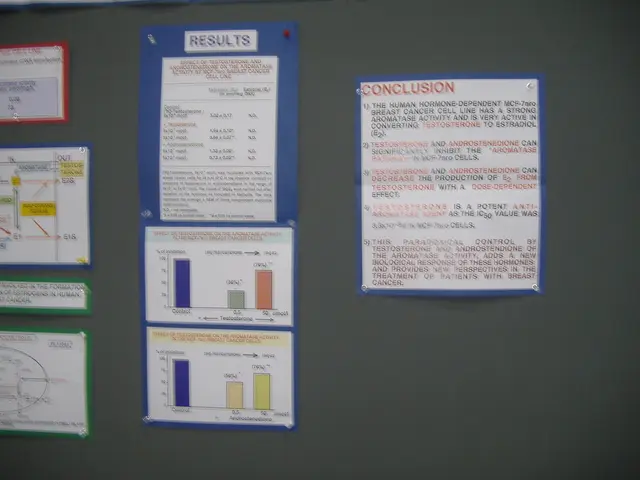Enterprise IT landscape experiencing transformation through the disruptive impact of microservices
In today's dynamic business landscape, the traits of creating value, having flexibility, and driving innovation are paramount for success. This is particularly true for IT enterprises as they navigate the shift towards microservices architecture.
The trend of breaking vendor lock-ins and the one-size-fits-all approach is reshaping the modern IT landscape, producing technologies that can be consumed in a more flexible and open manner. Docker, for instance, is poised to disrupt the market further by being the monolithic enterprise hypervisor killer, delivering and running distributed applications in an open and flexible manner.
Start-ups, young companies, and even older companies are best prepared moving forward if they emphasize these key traits. Hewlett Packard, for example, has split its operations into two separate corporate entities: HP Enterprise and HP Inc., with the former focusing on server, software, storage, networking, and associated services sales, while the latter sells printers and PCs.
As microservices architecture becomes more prevalent, solutions that allow for their visualization, tracking, and governance will also become a requirement for an increasing number of enterprises. KEMP Technologies, as stated by its Director of Product Line Management, Jason S. Dover, emphasizes the importance of this emphasis on creating value, having flexibility, and driving innovation in today's business landscape.
To effectively adapt to the rise of microservices architecture and maintain a competitive edge, up-and-coming enterprise IT companies should focus on strategic planning, technological alignment, and organizational evolution.
Strategic Planning and Alignment
- Align Microservices with Business Needs: Ensure that the microservices architecture aligns with the company's business domains and capabilities. This involves conducting domain modeling workshops to identify bounded contexts and service boundaries.
- Embrace Agile Methodologies: Implement Agile methodologies like Scrum or Kanban, and frameworks such as the Scaled Agile Framework (SAFe), to improve flexibility and speed in development.
Technological Adaptation
- Implement Scalable Architectures: Choose scalable architectures like microservices or modular monoliths, and leverage cloud infrastructure (e.g., AWS, Azure) for auto-scaling and failovers.
- Decentralized Data Management: Implement decentralized data management strategies, such as event sourcing or CQRS, allowing services to own their data and manage consistency.
- CI/CD Pipelines: Automate testing, building, and deployment processes using tools like Jenkins or GitHub Actions. This ensures quick and reliable deployments.
Organizational Evolution
- Talent Attraction and Retention: Attract and retain skilled developers by embracing modern architectures and tools. This fosters a culture of innovation and fast-paced development.
- Cross-Functional Collaboration: Encourage cross-functional collaboration between teams to ensure alignment and effective communication throughout the development process.
- Continuous Learning and Innovation: Stay updated with the latest trends and best practices in microservices architecture. Continuously innovate and improve processes to maintain a competitive edge.
A recent survey by MuleSoft revealed that 66% of respondents found that microservices will be 'important' or 'very important' to their business strategy in the next 12 months. As more enterprises adopt microservices, companies that identify opportunities in microservices governance and visualization will become a requirement for an increasing number of enterprises, with MuleSoft and AppDynamics being prime examples.
The days of monolithic application suites and network solutions offered by legacy vendors are numbered. Simplified Scalability, whether relying on a traditional data centre approach, public cloud, or software-as-a-Service (SaaS), based on real-time data, helps businesses win in the marketplace. IT Agility is increasingly seen as essential in allowing for the optimal use of technology to maintain a competitive edge.
The trend towards disaggregation or unbundling is becoming more commonplace for legacy organizations attempting to maintain a competitive stance with startups. Companies such as eBay and PayPal have parted ways to allow both companies to have a sharper focus and greater flexibility to pursue future success.
Now is the time for CIOs and network administrators who haven't yet to get on board with these trends that are re-imagining the way IT infrastructure is deployed. Hortonworks, an Open Enterprise Hadoop solution that relies solely on open source components and the open community, avoids lock-in to vendor-specific analytics, providing a flexible and open approach to data management.
In conclusion, by focusing on strategic planning, technological alignment, and organizational evolution, up-and-coming enterprise IT companies can effectively harness the benefits of microservices, improve their scalability and agility, and maintain a strong position in the market.
Read also:
- MRI Scans in Epilepsy Diagnosis: Function and Revealed Findings
- Hematology specialist and anemia treatment: The role of a hematologist in managing anemia conditions
- Enhancing the framework or setup for efficient operation and growth
- Hydroelectric Power Generation Industry Forecasted to Expand to USD 413.3 Billion by 2034, Projected Growth Rate of 5.8% Compound Annual Growth Rate (CAGR)







